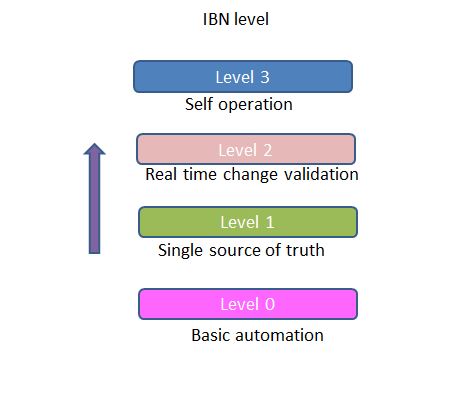What is intend Based Networking (IBN)?
Intend based networking is networking software that is used to manage end to end network life cycle. End to end network life cycle management includes plan, design and implement/operate. In layman term, we can say we are putting our network in the auto pilot mode with the help of IBN.
Intend based networking automation works on declarative programmable approach which significantly reduces complexity of network automation. It is working on the principle of “what” and not “how”. “What” is intended to business requirement.
IBN plays critical role in 5G network slicing. In end to end network slice orchestration, main focus on business centric rather than network centric. There is a business intend provided by the user that intend is decomposed into different network functions. These different network functions are nothing but list of activity to be performed by domain specific controller.
Intend Based Networking Automation Level
There are total 4 level in intend based network close loop automation.

Level 0 IBN:
It is expected to have some early implementation till IBN mature. It is all about basic automation. Level 0 IBN systems have following capabilities.
- Able to generate device configuration from declarative specification. Example – scripts running on Ansible modules.
- It should support heterogeneous infrastructure.
- Ingest real time network status in a protocol and transport agnostic way.
Level 1 IBN:
In level 1 IBN implementation, there is a single source of truth which contains intend as well as network operational state. Level 1 IBN systems have following capabilities.
- It contains data and artefacts related to all aspect of network service life cycle.
- It contains intend and context aware network operational state.
- It should validate business intend and validate it whether business intend id met.
Now the question is how we ensure that single source of truth is deployed. To validate it, single source of truth should provide answer to following API query.
- What is the link utilization on all links that carry traffic of customer X?
- Which customer will be impacted if link x fails or gets congested?
Level 2 IBN:
At level 2 IBN, real time change validation is introduced. Level 2 IBN systems should validate before making any changes in a real time. Let say we want to put one active switch in maintenance mode. Level 2 IBN system should check following.
- Is it the maintenance window for doing this activity?
- Any other leaf is in maintenance mode?
- Any critical service impact with this activity?
Level 3 IBN:
At level 3 IBN, self-operation is introduced. This is our ultimate goal to make self-operating and self-healing network. Validation closed the loop between intend and operational state by providing observability. Now, we got to know about our intend validation. If the intend validation is failed then IBN level 3 systems should be capable of doing corrective action to make self-operating network.
# Check out your network operating on which level 🙂